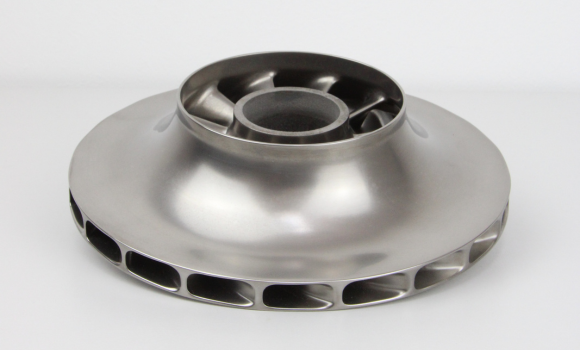The ColdMetalFusion technology was established by Headmade Materials, a company based in Germany. But rather than introducing a completely new 3D printing technology, Headmade Materials introduced a new material for existing selective laser sintering (SLS) equipment and combined it with existing workflows from metal injection molding (MIM).
The first step of the CMF process chain is the printing of highly filled plastic parts using a SLS 3D printer. These printed parts are then depowdered, as with SLS, and debound and sintered using processes similar to MIM. At the end of the ColdMetalFusion (CMF), a solid metal part is obtained.
The advantages of ColdMetalFusion
The CMF process opens new possibilities in metal production. In addition to the low entry costs, it offers simple scalability. This means that productivity can be easily increased by switching to larger machines or expanding the machine park – while maintaining the same high level of repeatability.

In addition, the shrinkage during sintering is extremely uniform and predictable. With shrinkage rates of around 12 percent for titanium and 14 percent for steels, CMF is significantly lower than most sinter-based AM processes. Adjustments are made simply by scaling the CAD file. Other convincing advantages of CMF include a low to zero scrap rate and geometric accuracy with better tolerances than casting for a similar part size.
A crucial factor in industrial use is above all the robustness of the processes with low waste. CMF impresses in this regard due to its simplicity and is based on proven SLS technology, which has been used on thousands of printers installed worldwide for decades. The machine is therefore not just maturing at the customer but has already been tried and tested. In addition, the 3D printed metal-filled plastic part, known as the green part, is characterized by its strength, is easy to clean and can be further processed. Cost-intensive reworking of the component can therefore often be carried out cost-effectively while the part is still green.
The step into industrial series production
A common problem in Additive Manufacturing is the transition from prototyping and small series manufacturing to industrial series production.
Thanks to the modular system and the above-mentioned advantages, especially the proven equipment, the step into industrial series production of thousands of parts with ColdMetalFusion is much easier.

In addition, the existing sintering workflow is already used for decades in series production of thousands of parts which means that equipment designed for high throughput and capacity is already available on the market as is the corresponding know-how.
This means that a parts output in the double-digit tons per year can be achieved with just one printer, and that is just the starting point.
In other words, ColdMetalFusion combines the flexibility of 3D Printing with the maturity and scalability of the Sintering Process resulting in a solution that enables the rise of industrial 3D printing.
Christian Fischer, Managing Director and Co-Founder of Headmade Materials, will be participating at the upcoming Additive Manufacturing Strategies business summit in New York, February 6 to 8, 2024. Fischer will be speaking about Headmade during the Start-up Pitches segment.
Subscribe to Our Email Newsletter
Stay up-to-date on all the latest news from the 3D printing industry and receive information and offers from third party vendors.
Print Services
Upload your 3D Models and get them printed quickly and efficiently.
You May Also Like
Consolidation in AM: How 2025 Is Shaping the Industry’s New Normal
The first half of 2025 has been marked by a clear shift in the additive manufacturing (AM) industry. Companies are no longer just focused on developing new tech by themselves....
Heating Up: 3D Systems’ Scott Green Discusses 3D Printing’s Potential in the Data Center Industry
The relentless rise of NVIDIA, the steadily increasing pledges of major private and public investments in national infrastructure projects around the world, and the general cultural obsession with AI have...
3DPOD 260: John Hart on VulcanForms, MIT, Desktop Metal and More
John Hart is a Professor at MIT; he´s also the director of the Laboratory for Manufacturing and Productivity as well as the director of the Center for Advanced Production Technologies....
Making Space: Stratasys Global Director of Aerospace & Defense Conrad Smith Discusses the Space Supply Chain Council
Of all the many verticals that have been significant additive manufacturing (AM) adopters, few have been more deeply influenced by the incorporation of AM into their workflows than the space...

































